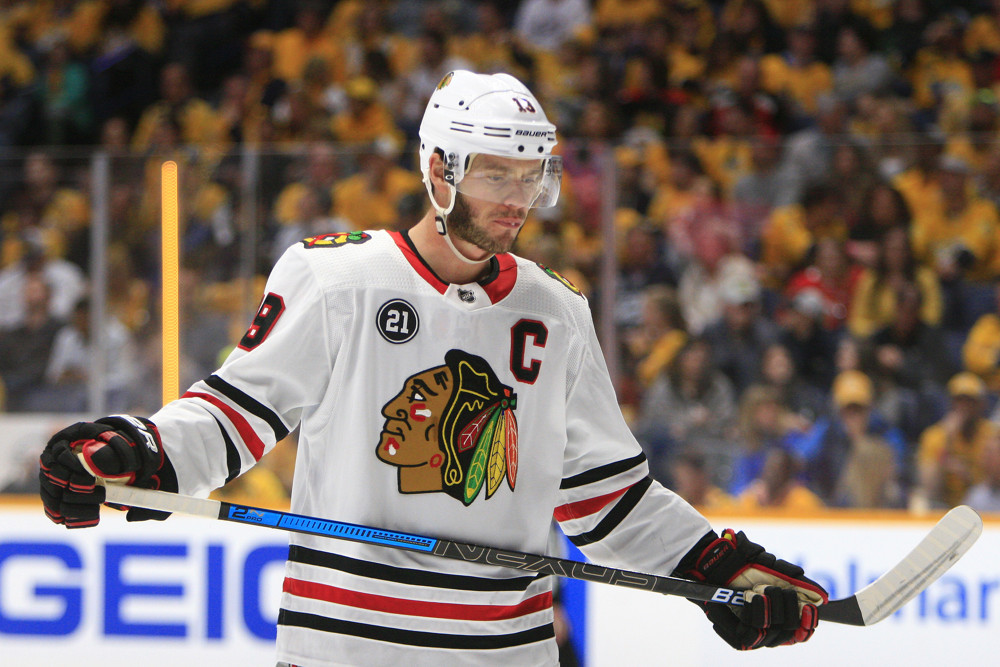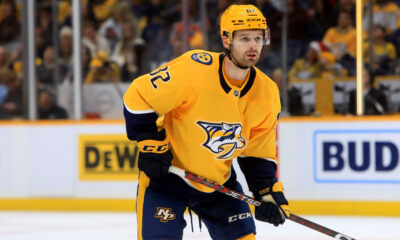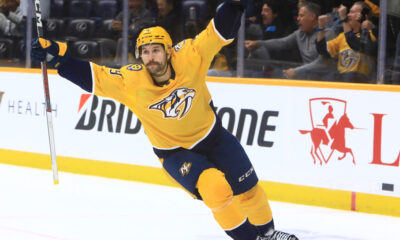Allow me to explain why I chose to write this.
I play baseball at DePauw University, a college located an hour west of Indianapolis and a converging point for three Central Division teams: the Chicago Blackhawks, Nashville Predators, and St. Louis Blues. Many Chicago residents send their children to DePauw, and many of them are Chicago Blackhawks fans. Some of these fans happen to be my baseball teammates, and they love to defend their team.
Recently, a winless Blackhawks team hosted an undefeated Edmonton Oilers team, and a couple of my teammates went to the game and talked about it in the baseball GroupMe. Being a freshman can be intimidating at times, but talking about hockey is a crucial aspect of my personality, so I figured I would chime in with some witty banter. I remarked, “Lol good luck with an undefeated Oilers team.” I thought the comment was harmless; I didn’t mean to touch on a subject so sensitive to them, and I certainly did not mean to upset anyone.
Given their reactions and replies, you would’ve thought I had declared war on their entire existence.
Admittedly, in my short career as a journalist, I’ve made some pretty bold predictions and had some pretty bad hot takes. One of the weirdest things about sports journalism is the reason people join: they want to cover their favorite team in a favorable manner, but the truth is objectivity is crucial to be successful. The transition from a fan to an analyst comes with a certain bias, and the work to remove the fan aspect of my writing sometimes doesn’t work. Perhaps my bias slipped through when I made that remark.
Then, as if the universe was reading the GroupMe, the Chicago Blackhawks dominated the Edmonton Oilers and defeated them 3-1. Because of their record and their stats line from that particular game, I asked myself if I was being too bias about the Blackhawks. Naturally, I checked the statistics over their first few games, and here’s what I found.
A few disclaimers: I KNOW it is unfair to make playoff predictions three weeks into the season, and I KNOW this isn’t exactly a fair assessment considering the sample size is alarmingly low. I’m simply pointing out early trends and measuring how they looked against relatively strong teams, and give some insight on how the Hawks have played.
I checked percentages at even strength, not necessarily the total number the Hawks produced in these specific categories. What I consider most important about a team is how well their offense functions period to period. Below, I mention total shot attempts (CF%), scoring chances (SCF%), high danger chances (HDCF%), and expected goals (xGF%).
Game One: the Flyers
The score isn’t reflective of how the game actually played out.
In the first period, Travis Konecny and Alexander Nylander were the goal scorers. After one, the teams looked pretty even statistically with Chicago holding a slight advantage over the Flyers in total scoring chances. Here’s how the Blackhawks faired after one.
- CF% – 47.37
- SCF% – 62.5%
- HDCF% – 42.86%
- xGF% – 52.99%
In the second period, Oskar Lindblom netted his first goal of the year, then Travis Konecny followed with his second of the night. Alex DeBrincat pulled the Hawks back to within one on the man-advantage before the horn sounded. The teams traded one high danger chance each this period. Chicago’s defense allowed 14 scoring chances, and could not muster any offense at even strength. Somehow, the Hawks limited the damage to only two goals. Here’s how they faired after two.
- CF% – 29.63%
- SCF% – 12.5%
- HDCF% – 50%
- xGF% – 39.02%
In the third period, they leveled out again. Michael Raffl all but put the game away midway through the period even though Patrick Kane replied with less than four minutes remaining. At the end of the game, the final was 4-3 Philadelphia. Here’s Chicago’s third period stats.
- CF% – 46.88%
- SCF% – 15.38%
- HDCF% – 0%
- xGF% – 14.32%
Corey Crawford finished with a sub-par .895 save percentage, stopping 34 of 38 shots. The second and third period were not the Hawks’ finest periods, as they allowed eight high danger chances at even strength. In all honesty, Chicago was terrible after forty minutes, but they still scored to keep the game close. The better team definitely won that particular day. The fact that they were not beaten by a larger margin is quite surprising.
Game Two: the Sharks
A game the Blackhawks should have won on paper, the end result was a 5-4 defeat. This game was close because Aaron Dell, the Sharks goaltender, finished with an abysmal .867 save percentage and because of bad Erik Karlsson defense. Much like the first game, the first period was Chicago’s best of the night. Dominik Kubalik and Andrew Shaw were Chicago’s two goal scorers, but the game was tied after one period of play.
- CF% – 57.58%
- SCF% – 73.68%
- HDCF% – 80%
- xGF% – 77.43%
The Sharks completely flipped the script in the second period, as they dominated at five on five. Were it not for a bad San Jose goaltender, Chicago could have lost the game before the third period even began. The Hawks allowed six high danger chances, yet still went into the third period tied. I’ll let the stats speak for themselves.
- CF% – 26.47%
- SCF% – 31.58%
- HDCF% – 0%
- xGF% – 24.58%
The third period was somehow worse for the Hawks than the second period at five on five. San Jose’s offense completely obliterated the Hawks, limiting them to four shot attempts. All in all, this was a really bad game for Chicago, and once again, the better team won. How did Chicago look statistically, you might ask?
- CF% – 19.05%
- SCF% – 11.11%
- HDCF% – 0%
- xGF% – 13.09%
Game Three: the Jets
This was the closest game through sixty minutes for the Hawks thus far. Theoretically, this game could have gone either way, and Chicago had a reliable Robin Lehner in net. Both Chicago goals were scored in the first period off of special teams but didn’t score the rest of the game. Chicago spent eight minutes in the penalty box, so the numbers are a little askew. Here’s how Chicago looked after one.
- CF% – 61.76%
- SCF% – 63.16%
- HDCF% – 66.67%
- xGF% – 60.59%
The Hawks were the better team in the first period, but the Jets were better in the second period. As a matter of fact, Chicago was absolutely terrible for those twenty minutes. They were not out of contention by any means, but they were extremely lucky to go into the third period with a lead. Winnipeg scored one goals in the second period, but they still had a lead and were still creating chances. Here’s how they looked after two.
- CF% – 36.36%
- SCF% – 25%
- HDCF% – 25%
- xGF% – 31.13%
In the third period, the Hawks played better, but still not great. Andrew Copp of the Winnipeg Jets tied the game midway through the period. Chicago stayed competitive and made the Jets earn this victory. This game went into overtime, and the two teams shared one shot: the game winning shot for Mark Scheifele. It would be unfair to combine those stats with the third period, so below features the third period only.
- CF% – 51.35%
- SCF% – 43.75%
- HDCF% – 50%
- xGF% – 50.92%
Objectively, the Hawks were slightly better than the Jets in the third period, but the Jets were able to win one more puck battle behind the net and bury the chance to force overtime. Overall, Chicago played their most competitive, after-first-period hockey against the Jets, so they improved from one game to the next. There’s something to be said about that.
Game Four: the Oilers
Chicago’s first win. And to their credit, they absolutely earned it. The Hawks played competitive hockey through all three periods and solved Mike Smith when they needed to. Corey Crawford put together a fantastic night. Progress! Here’s how they looked after one.
- CF% – 51.43%
- SCF% – 71.43%
- HDCF% – 50%
- xGF% – 53.15%
Neither team scored in the first period, but Chicago created more scoring chances (12) than Edmonton (5), and split even with high danger chances. Although both teams had three high danger chances each, Chicago was better through the first period per usual. When Patrick Kane scored in the second period, the game looked out of reach for the Oilers based off play at five on five. Here’s how Chicago looked after two.
- CF% – 75%
- SCF% – 71.43%
- HDCF% – 55.56%
- xGF% – 66.51%
The difference between how Chicago played against Edmonton versus how they played against the other three teams is the second period. They dominated scoring chances again, held a slight advantage in high danger chances, and really limited the Oilers in total shot attempts. In the third period, Alexander Nylander beat Mike Smith on a broken play and a bad read, and the Hawks all but put the game away. However, they were outplayed in the third period, as Edmonton pushed back for the last twenty.
- CF% – 38.1%
- SCF% – 36.36%
- HDCF% – 50%
- xGF% – 35.82%
James ‘The Real Deal’ Neal netted the Oilers’ lone goal, and had this game played another five minutes, the Oilers probably would’ve tied it up. Ultimately, Chicago played fundamental hockey through two periods and played in front of a good Corey Crawford, who ended the day with a .964 save percentage. All in all, Chicago was good enough to win, and the better team won that day.
Game Five: The Blue Jackets
This was the first game Chicago played worse than their opponents and managed a win. Considering the Blue Jackets do not possess big offensive weapons, the score is pretty reflective of how the two teams played. Drake Caggiula grabbed his first goal of the year, meaning they capitalized on a chance. First period stats read as such.
- CF%- 35.48%
- xGF%- 33.1%
- SCF%- 31.25%
- HDCF%- 40%
As the game grew older, Chicago began to level with the Jackets in terms of play, but Columbus’s Pierre Luc Dubois tied the game up. This game became more interesting through the second period, as can be seen below.
- CF%- 50%
- xGF%- 64.9%
- SCF%- 45.45%
- HDCF%- 75%
In the third period, both teams grabbed a goal each and the Hawks eventually won in overtime. They snagged a desperately needed two points in a game where they should have been on the ropes. The Hawks made the most of their chances, and that isn’t something to be disregarded. Third period stats, you may ask?
- CF%- 50%
- xGF%- 30.08%
- SCF%- 42.86%
- HDCF%- 33.33%
If You’ve Made It This Far
They were 2-2-1 to start the year. They are now 2-4-2.
Their record through the first games ultimately means nothing, and players are bound to get hot and cold as the season progresses. I hate to use an eight game sample to indicate a season, because it isn’t entirely fair. Neither is game to game analytics. However, it’s worth noting there are issues with no easily presentable solutions.
So… Are They a Playoff Team?
Based off of early trends, here’s what I’ll say.
It appears the offense goes AWOL in the second period and limps through the third period. They couldn’t beat Aaron Dell whose save percentage, as of October 15th, is .884. The reason the offense very rarely shows is because defense typically disappears after twenty minutes. Should Patrick Kane or Alex DeBrincat trail off or be prone to injury, the offense may not be able to put together goals against clear-playoff-caliber teams, and more importantly, may not be able to shut down other teams’ offensive production. Chicago’s top two lines are definitely good, but the bottom six and the defensive pairings are not. This year’s Chicago team looks like an average NHL team that has been unlucky at inconvenient times. Chicago scores goals infrequently and at weird angles, and although they score goals, the production thus far has been pretty inconsistent.
Whether or not Chicago makes the playoffs this year depends on three things, as listed below.
- Robin Lehner needs to start more if the Hawks are to have a secure situation in between the pipes. I’ve liked Robin Lehner’s play a little better, so resting Crawford right now might seem beneficial, but perhaps the solution is give Crawford more pucks to see. Given how the Blackhawks’ defense has played thus far, both goaltenders should see a lot of rubber.
- If Chicago finds a way to limit shot attempts in the second and third periods, there’s no reason they can’t tack on two or more goals in forty minutes of play. The Hawks look like a different team with each coming period, and consistency in the neutral zone might help them limit the other team’s offense.
- Through three weeks, it appears Nashville, Colorado, Winnipeg, and St. Louis will duke it out for the Central Division title. Dallas will eventually start playing well, and with five out of the seven teams competing for a spot, it’s really hard to picture Chicago finishing in the top three right now. Given how loaded the Central Division is, Chicago’s best chance would be to squeak in a Wild Card spot.
Chicago does not have the offensive firepower nor the reliable goaltending in Corey Crawford to take the ‘Score more goals than the other guys’ approach. All in all, they have THE POTENTIAL to make it to the playoffs, but they’re not a good team and they will have to earn every single win. Their 2-4-2 record is reflective of how they’ve played thus far, so something has to get better or this will happen for the rest of the year. The Hawks will have to play above average hockey for the majority of the year if they want more than 82 games. Otherwise, the 2 year playoff drought will continue.













